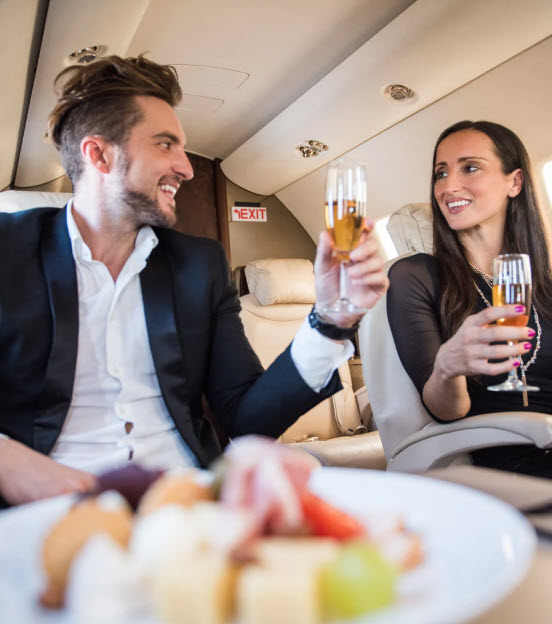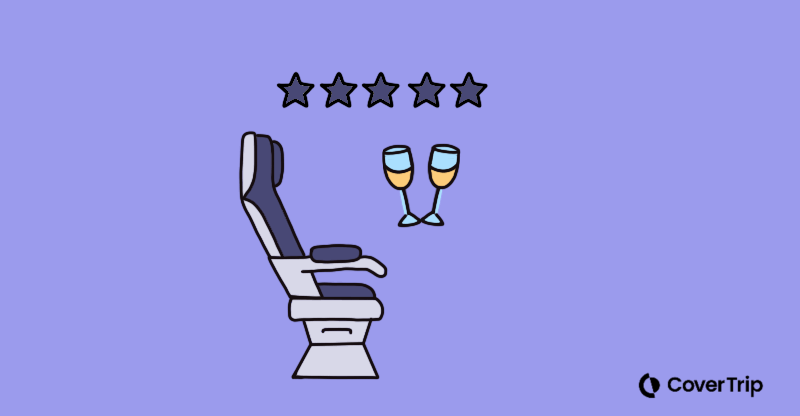How to Upgrade Your Flight On the Cheap
19 September 2025
Flying in premium cabins doesn’t have to cost a fortune if you know the right strategies and timing. While airlines have made upgrades more challenging in recent years, savvy travelers who understand the new rules can still secure better seats, extra legroom, and premium service without paying full price.
The key is abandoning outdated tactics that no longer work and focusing on the methods that airlines actually reward in today’s revenue-driven environment.
Here’s what you need to know to upgrade your airline seat cheaply now.

Before Booking: Set Yourself Up for Success
The key to getting flight upgrades starts long before you arrive at the airport – it begins with smart booking decisions that position you for success. Many travelers unknowingly sabotage their upgrade chances by choosing the wrong fare types or skipping simple (and free) steps that airlines actually reward.
1. Join airline loyalty programs, even if you fly rarely
This is the single most important step you can take, and it costs nothing. Being a loyalty program member automatically puts you ahead of non-members on upgrade lists, regardless of how often you fly. Airlines prioritize their customers first, so even basic membership gives you a significant advantage over travelers who haven’t bothered to sign up.
2. Avoid basic economy tickets at (almost) all costs
While these fares might save you $50-100 upfront, they come with severe restrictions that eliminate virtually any chance of an upgrade. Basic economy passengers are typically excluded from upgrade lists entirely, they can’t select seats in advance and have no flexibility if plans change. If an upgrade is even remotely important to you, spend the extra money for regular economy.
Pro tip: A basic economy ticket is fine for short flights when you’re in a hurry and don’t want to spend the extra cash and you don’t need to carry a lot of luggage (think backpack only).
3. Consider an airline credit card for everyday spending
You don’t need to be a frequent flyer to achieve elite status anymore. American Airlines, for example, grants Gold status (which includes free domestic upgrades) when you spend $40,000 annually on their credit card. United and Delta offer similar programs. If you’re already spending money on groceries, gas, and bills, why not earn airline status in the process?
4. Time your flights strategically
Avoid peak business travel times when premium cabins are likely to be full – Monday mornings, Thursday evenings, and Friday evenings are the worst times for upgrade availability. Mid-week flights and Saturday departures typically offer better upgrade odds since business travelers avoid these times.
Pro tip: If you have the flexibility, fly on the holiday, and you’ll have the most options for upgrading!
These foundational steps cost little to nothing but dramatically improve your chances before you even set foot in an airport.
Days Before the Flight: Watch for Email Offers
Airlines want to fill their premium cabins and are increasingly willing to offer discounted upgrades to passengers who know where to look. The key is being proactive and monitoring multiple channels in the days leading up to your flight.
1. Watch your email inbox like a vigilant hawk
Airlines send targeted upgrade offers to passengers, typically within five days of departure. These aren’t spam – they’re legitimate offers showing exact upgrade costs without any bidding required. For example, you might receive an email offering a business class upgrade for $299 when the original price difference was $800. These offers are limited and time-sensitive, so act quickly when they appear.
2. Check for last-minute deals during online check-in
When the 24-hour check-in window opens, immediately check your airline’s app or website for upgrade offers. Airlines would rather sell empty premium seats at a discount than fly them empty, so you’ll often find deals that are 50-70% cheaper than the original upgrade price. Airport kiosks also display these offers if you prefer to handle it in person.
These opportunities move fast – email offers might expire in minutes or hours. Check your email regularly in the five days before travel, and don’t hesitate when you see a reasonable offer.
The airlines essentially invite you to upgrade at a discount – you just need to know when and where they’re extending these invitations.
At the Airport: Last-Chance Strategies
Once you’re at the airport, you have several final opportunities to secure an upgrade, but timing and approach are everything. These strategies work best when you’re prepared, polite, and flexible with your travel plans.
1. Approach gate agents 45-60 minutes before boarding
Gate agents have real-time access to seat maps and upgrade availability that you can’t see online. Politely ask if any paid upgrades are available – they’re often willing to offer discounted upgrades rather than fly empty premium seats. The key word here is “paid” – asking for free upgrades rarely works, but showing you’re willing to pay something often opens doors.
2. Inspect your seat immediately after boarding
This “sneaky hack” actually works: if you find a legitimate problem with your assigned seat (broken armrest, non-reclining seat, malfunctioning entertainment screen), report it to a flight attendant immediately. If the economy section is full, they may move you to a better seat in premium economy or business class rather than try to fix the issue mid-flight.
Pro tip: You can research potential problem seats beforehand using SeatGuru or AeroLOPA to know what to look for.
Just know that boarding time is hectic, and flight attendants can’t move you until nearly complete. You’ll need to keep your things packed and be ready to move quickly to the new seat if it’s offered.
3. Strategically volunteer for overbooked flights
Airlines routinely overbook flights, and volunteering can pay off handsomely if you’re flexible with your schedule. Don’t just accept the first offer – negotiate for confirmed upgrades on your next flight, not just travel credits. Solo travelers with only carry-on luggage have the best chances since they’re easier to accommodate on alternative flights.
4. Be willing to fly solo for better odds
Airlines prefer upgrading individual passengers rather than couples or families because it’s logistically simpler. If you’re traveling with a partner, consider mentioning that you’d be willing to sit separately if it increases your chances of being upgraded—you can always ask other travelers if you can sit together once you’re in the premium cabin.
These airport strategies require flexibility and good timing, but they can turn a routine flight into a much more comfortable experience.
What Not to Do: Outdated Strategies to Avoid
The flight upgrade landscape has changed quite a bit in the last few years. Here are some outdated strategies that just won’t work anymore.
1. Stop falling for the “dress nicely and ask politely” approach
While being well-dressed and courteous never hurts, the days of gate agents randomly upgrading passengers based on appearance alone are essentially over. Airlines now have sophisticated revenue management systems and strict upgrade hierarchies based on status and fare class. Charm might get you better service, but it won’t override the computer algorithms that control upgrade lists.
2. Don’t book basic economy hoping for a miracle upgrade
Some travelers think they can save money on basic economy and still get upgraded, but this is wishful thinking. Basic economy passengers are typically excluded from upgrade lists entirely, regardless of their status or willingness to pay. You’re essentially guaranteeing yourself the worst possible experience while eliminating any chance of improvement. Again, buy this type of ticket only if it’s a short flight, you’re not carrying any baggage, and you just want to save money and get there.
3. Avoid waiting until the last minute without preparation
The old advice of “just show up early and ask nicely” ignores all the proactive steps that actually work. By the time you’re at the gate, most upgrade opportunities have already been distributed to passengers who joined loyalty programs, bid through airline systems, or received email offers.
4. The ‘call for an upgrade’ strategy is largely gone
This is a strategy I’ve used successfully in the past, and yet, it’s about to become ineffective.
- American Airlines completely eliminated their fixed upgrade award chart as of August 12, 2025, replacing it with dynamic “Instant Upgrades.” The old system where you could call and use miles plus a cash co-pay (like 25,000 miles + $350 for transatlantic business class upgrades) is gone.
- United Airlines is following suit – their current mileage upgrade chart is only valid until November 24, 2025, after which they’ll switch to dynamic pricing as well.
What’s Changed
- Dynamic Pricing: Airlines now price upgrades based on demand and revenue management, not fixed charts
- Much Higher Costs: Early reports suggest the new dynamic pricing yields about 1 cent per mile value, which is poor compared to other redemption options
- Online-Only: Most upgrades are now handled through airline websites/apps rather than phone calls
What Still Works (For Now)
- United: Still accepts mileage upgrades at fixed rates until November 2025, but you need to call for partner airline upgrades
- Delta: Very limited – only works for select international markets and requires calling
- Air Canada: Has bidding systems, but you can still upgrade award tickets with points
Damian Tysdal is the founder of CoverTrip, and is a licensed agent for travel insurance (MA 1883287). He believes travel insurance should be easier to understand, and started the first travel insurance blog in 2006.
